-
Membership
Membership
Anyone with an interest in the history of the built environment is welcome to join the Society of Architectural Historians -
Conferences
Conferences
SAH Annual International Conferences bring members together for scholarly exchange and networking -
Publications
Publications
Through print and digital publications, SAH documents the history of the built environment and disseminates scholarship -
Programs
Programs
SAH promotes meaningful engagement with the history of the built environment through its programs -
Jobs & Opportunities
Jobs & Opportunities
SAH provides resources, fellowships, and grants to help further your career and professional life -
Support
Support
We invite you to support the educational mission of SAH by making a gift, becoming a member, or volunteering -
About
About
SAH promotes the study, interpretation, and conservation of the built environment worldwide for the benefit of all
Confederate Monuments and Civic Values in the Wake of Charlottesville
The political climate in the United States since the election of Barack Obama has brought to public view a virulent strain of white supremacy that is deeply embedded in American history and culture. The last presidential election seems to have given white supremacists permission to be more open. The events in Charlottesville, Virginia, in August are only the most conspicuous of many such incidents, but they have stimulated yet another discussion of the fate of Confederate monuments and other symbols in the civic sphere. It is important to understand that this is only the most recent eruption of a long argument that goes back to the time of the Civil War. African Americans have been part of this struggle since Reconstruction, even though many other Americans have only recently become aware of it. Much of the current public debate is characterized by misconceptions, obfuscations, and misleading emphases that serve to confuse the issues. It might be useful to examine some things that this conflict is not about as a way to understand what it is about.
1. This is not a question of preserving or erasing history. History is intangible and complex and is told and retold as an ongoing story. Public monuments point to some aspect of history that the public (ostensibly—more of this later) considers worthy of commemoration and they interpret that aspect of history from a particular point of view.
This is a debate about which aspects of history ought to be celebrated in the civic realm. In American politics and custom, symbols in public space—monuments, flags and other emblems—are assumed to enjoy the general approbation of the population and to represent common values. This is a fiction. Most monuments are the projects of small numbers of interested parties. Currently, however, there are checks and balances. It is very difficult to erect a new monument in any public space. Endless rounds of public comment and design review are required. In the late nineteenth and early twentieth centuries no such constraints existed. The Confederate monuments were erected by people who were able to exert their will unchallenged, without the voices of African Americans or even of most whites being heard. The Charlottesville statues were erected by the smallest group possible: one man. Paul Goodloe McIntire purchased the sites, chose the subjects, and paid for the statues.1 His Stonewall Jackson statue, which stands a few blocks from the Lee statue that received most of the publicity in August, was built on the site of a row of sturdy early-nineteenth-century houses whose only fault was that they were occupied by African Americans. They were demolished and the Jackson statue, with its base representing winged allegorical figures of Faith and Valor carrying a shield based on the Confederate battle flag, replaced them.2 (fig. 1)
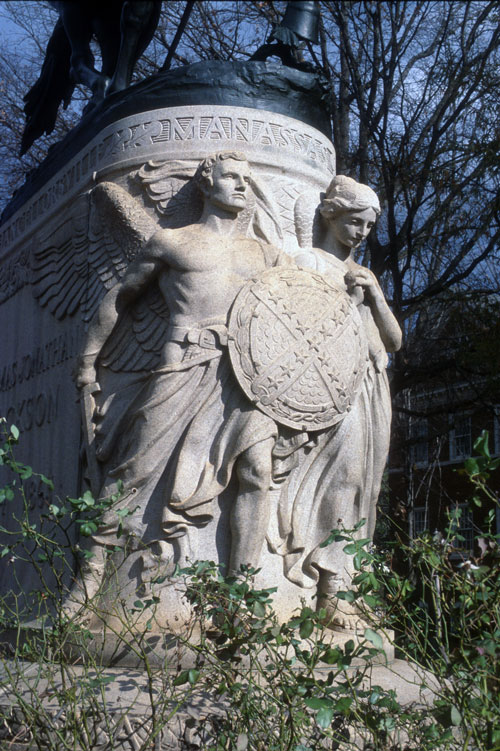
Fig. 1. Charles Keck, Thomas Jonathan [Stonewall] Jackson, 1919-24, Courthouse Square, Charlottesville, Va. Detail of base.
Although statues in civic spaces are read as expressing common sentiments, this was not the case for the Confederate statues (and some others, of course). Confederate monument builders overrode public sentiment that ranged from indifference to hostility. Kirk Savage has chronicled the struggles to erect even the best-known of monuments, such as Robert E. Lee’s statue on Monument Avenue, Richmond. Repeated requests for funds were ignored, and African Americans, especially, resisted pleas for their support.3 The state Confederate monument in Montgomery, Alabama, was first proposed in the late 1860s, did not get underway until 1886, and was not completed until 1898. Although the monument stands next to the state capitol, neither the governor nor the mayor bothered to attend the dedication ceremony. The construction of the Confederate monument at the North Carolina state capitol was impeded by opposition from a Fusionist (Republican-Populist) dominated legislature in 1895. One legislator argued that “the memories of the war should be buried out of sight.” He advocated “digging a hole and burying all monuments.”4
2. This is not a debate about commemoration of the Civil War per se. The monuments in question were erected between the late 1860s and the 1920s, with most built after 1890. The first monuments were placed in cemeteries and purportedly expressed simple grief over the dead. They were erected under the auspices of Ladies’ Memorial Associations, which were ostensibly apolitical groups. The leadership of women and the siting in cemeteries were meant to disguise their political meanings as signs of continued allegiance to the Confederacy.5 After the end of Reconstruction and federal supervision, the monuments moved to the metaphorical public square and became more openly pro-Confederate. As a speaker at the dedication of the Montgomery Confederate monument declared, “there was no need to deify the New [South] by degrading the Old” or to celebrate the return to the United States by disavowing the Confederacy.6
Then as now, these monuments were surrogates for another kind of discussion, one about race and citizenship in the post-slavery nation. Confederate monuments offered a reading of the war that disguised but did not deny its origins in slavery. They depicted the war as a tie, one in which whites on both sides emerged with honor and with principles intact, while slavery and African Americans were ignored. This is the [white] “brother against brother” fiction. It is stated most explicitly on the Unity Monument (1923) at Bennett Place outside Durham, N.C., where the final Confederate surrender took place.7 Twin Corinthian columns representing the Union and the Confederacy support an entablature labeled “Unity.” (fig. 2) The inscription reads in part, “This monument . . . marks the spot where the military force of the United States of America finally triumphed and established as inviolate the principle of an indissoluble union. It marks also the spot of the last stand of the Confederacy in maintaining its ideal of indestructible states—an ideal which[,] preserved to the American union by virtue of the heroic fight[,] grows in strength from year to year.” Claims that “state sovereignty” or “states’ rights” were causes of the Civil War were after-the-fact interpretations intended to paper over the central role of race. The original ordinances of secession explicitly stated that the Confederacy was formed to defend slavery and white supremacy. Some of the ordinances complained about states’ rights when it involved northern states’ refusal to enforce the Fugitive Slave Act.
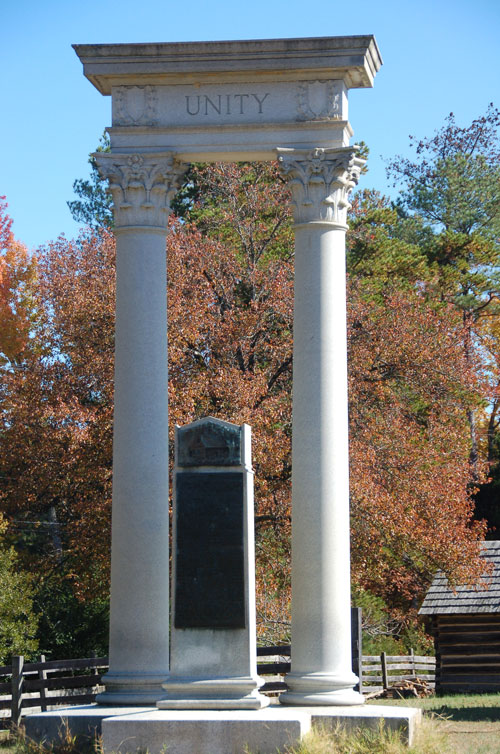
Fig. 2. W. H. Deasy, designer; Milburn and Heisler, architects, Unity Monument, 1923, Bennett Place, Durham County, N.C.
Moreover, among most of the present-day proponents of the monuments, the Civil War per se is a distant and poorly understood phenomenon. As the historian Thomas J. Brown has noted, the current defense of the monuments (and before that, the Confederate flag) is rarely based on the Lost Cause ideology that was widely taught in the South until quite recently and that inflected the teaching of the Civil War and Reconstruction nationally even when I was in public school in the 1950s and 1960s.8 Most defenders don’t even know what the Lost Cause was. I spoke in Columbia, S.C., earlier this year and a man who was pro-monument arose in tears to ask whether the Vietnam War couldn’t be considered a lost cause as well. He was obviously unfamiliar with the historical meaning of the term Lost Cause in the late-nineteenth and early-twentieth-century South. Instead, defense of the monuments is now framed as a defense of white ethnic heritage. In the South, the Confederacy is widely seen as the whites’ equally honorable complement of the African-American civil rights movement.
But what if the debate were about the Civil War? Does that justify the retention of the monuments? Another argument that we sometimes hear is that the statues of the Lees, Jacksons, and Davises are one thing, since they led the rebellion, but the common-soldier statues are another: they are merely signs of mourning for the war dead. There are two responses this argument.
First, as Kirk Savage has shown, these “common-soldier statues,” of which the Civil War memorials are the first of a now common type, were a way to deflect attention from the issues of war to the abstractions of duty and valor.9 (fig. 3) They underpin the current assumption that the military and military service are unquestioned goods whatever the cause. Those defenders of the statues who are not white supremacists are often motivated by an abstract reverence for all soldiers. This was the view of my questioner in Columbia. One way to think about this would be to ask, would I accept a statue to the personal bravery of the British troops who fought in the American Revolution? Of the Japanese aviators who died at Pearl Harbor? Of (real) Nazi soldiers? Of the September 11 highjackers? I ask this not as a version of the Hitler default (“my opponent is just like Hitler”) but as a kind of thought experiment. If we think of a sliding scale on which respect for personal valor lies at one end and respect for a cause lies at the other, at what point on that scale would I think that the evil of the cause outweighed the valor of individual troops? For me, the defense of slavery and white supremacy, rebellion against legitimate national authority, and responsibility for the deaths of hundreds of thousands of people stand on the far side of that point.
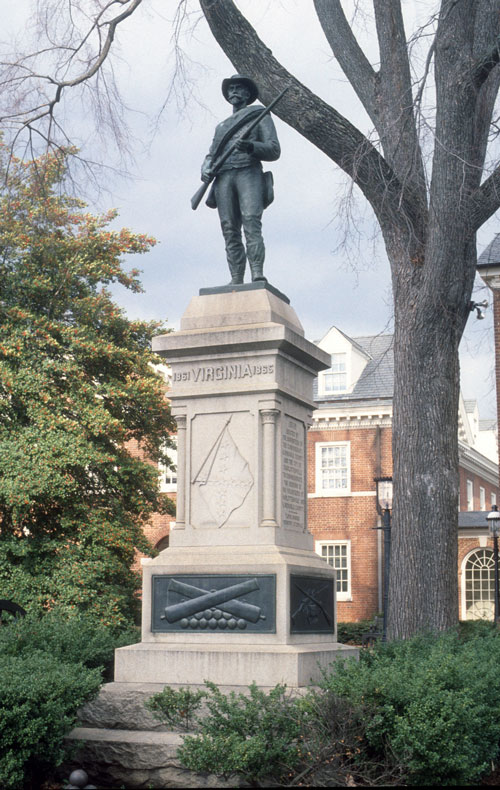
Fig. 3. United Daughters of the Confederacy, Confederate Monument, 1909, Courthouse Square, Charlottesville, Va.
Second, one often hears that ordinary Confederate soldiers were not slaveholders but were simply defending their homes. This was not an issue during the Civil War and it was not one when the monuments were built. In the Lost Cause ideology, women were the defenders of the home, and there are numerous statues to women of the Confederacy, many of which depict them as Penelopes awaiting their Ulysses. (fig. 4) Men were defending the racial-political order and the common-soldier statues were part of the same campaign that built the monuments to Confederate leaders. This is clear if we read the inscriptions that many carry: “They gave their lives and fortunes for Constitutional liberty and state sovereignty” (Salisbury, N.C.); “The Sons of Veterans Unite in This Justification of Their Fathers Faith” and “They Gave Their Lives in a Just and Holy Cause” (Oxford, Miss.); “Defenders of the Rights of the States” (Charlottesville; Centerville, Ala.); “Those Who Die for a Right Principle Do Not Die in Vain” (Tupelo, Miss.); “The Rights of the Southern Confederacy” (Williamsburg, S.C.); “Defenders of State Sovereignty” (Tarboro, N.C.; Fort Mill, S.C.).
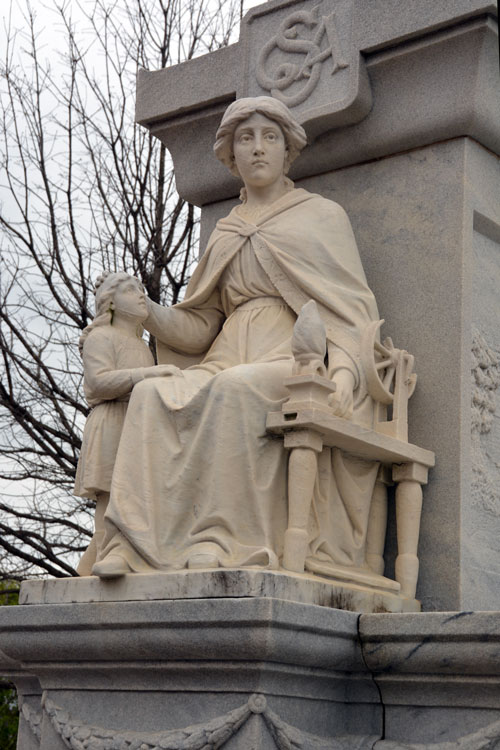
Fig. 4. Women of the South, 1911, Macon, Ga.
3. This is not ultimately a conflict over monuments. It is a conflict over the values that we wish to endorse in the contemporary public realm. Monuments are the focus of current debates, but before that it was the Confederate flag. And before that it was the monuments that are now being challenged again. And before that it was the question of whether the federal government should pay for the reburial and grave marking of Confederate dead.
4. This is not a controversy about art or its censorship. The monuments were not intended as public art—art for a public setting—in the sense that we normally understand the phrase. They are political statements whose meaning was clearly understood by their targets. They were part of a campaign to reaffirm white supremacy during a period that the historian Rayford Logan called “the nadir” of American racial politics, one that took many forms, including Jim Crow laws, disfranchisement, the rewriting of state constitutions to deny citizenship to blacks, and legal and extralegal terrorism. They stood as affirmations that the American polity was a white polity.
African Americans were never confused about the meaning of these statues. At the ceremonies marking the unveiling of the Robert E. Lee monument on Monument Avenue in Richmond, an old black man declared “The Southern white folks is on top—the Southern white folks is on top!” The editor of the local black newspaper wrote that “He [the black laborer] put up the Lee Monument, and should the time come, will be there to take it down.”10 In Charleston in 1887, the Ladies’ Calhoun Monument Association erected a statue of John C. Calhoun, a vociferous defender of slavery and proponent of secession, on a modest pedestal in Marion Square. It had been thirty years in the making. Calhoun overlooked the newly renamed Calhoun Street, formerly Boundary Street, the major black business street. It is also the location of Emanuel A.M.E. Church, the church home of Denmark Vesey, organizer of an 1822 slave rebellion, and scene of the 2015 murders. Mamie Garvin Fields, an African-American woman from a genteel family who was raised in Charleston in the 1890s, recalled that “Blacks took that statue personally. As you passed by, here was Calhoun looking you in the face, and telling you, ‘Nigger, you may not be a slave, but I am back to see you stay in your place.’” In response “We used to carry something with us, if we knew we would be passing that way, in order to deface that statue—scratch up the coat, break the watch chain, try to knock off the nose—because he looked like he was telling you that there was a place for ‘niggers’ and ‘niggers’ must stay there. Children and adults beat up John C. Calhoun so badly that the whites had to come back and put him way up high, so we couldn’t get to him.”11 The new statue was installed in 1896, standing atop an eighty-foot column.12 (fig. 5) Its inscription cryptically records that it replaced an older statue “which proved unsatisfactory.” Following Charlottesville, a long-standing campaign to remove the statue (which was recently conserved) has revived.
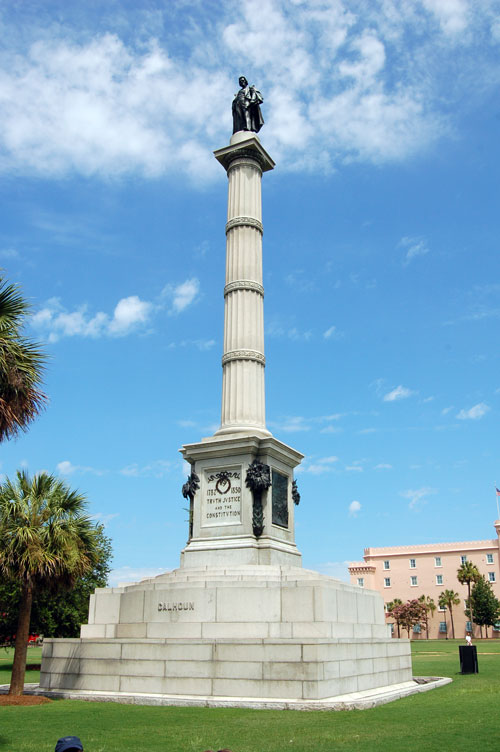
Fig. 5. J. Massey Rhind with Renwick, Aspinwall, and Renwick, architects, John C. Calhoun, 1894-96, Marion Square, Charleston, S.C.
5. This is not a discussion of the destruction of monuments. Some may have aesthetic value and deserve to be preserved on those grounds. Some, for example, were made by renowned sculptors such as Charles Keck (Stonewall Jackson, Charlottesville) or Jean-Antoine Mercié (Lee, Richmond). If so, they belong in art museums, which are full of aesthetically pleasing images of unsavory people. They’d be quite at home there.
What should be done with the rest, most of which are ordinary and many of which were mass produced? Some may belong in local or state history museums as artifacts of the past. Another possibility would be to move some of them to a site in the newly designated, long-overdue Reconstruction-Era National Monument in South Carolina. Removal from civic space (and maintenance) and destruction are two different issues. A suggestion that I favor would be to gather as many of them as possible in a Dead Rebels Park. I envision such a park not as a pleasant landscaped space like some of those in eastern Europe that house the statues of disgraced leaders, but as a display of rows upon rows of statues akin to the ceramic warriors at Xi’an. In its sheer magnitude such a display would be a very powerful and thought-provoking image.
At the same time, the idea that some might be destroyed should not worry us. Some works of art are meant to be temporary from the start. Others are treated even by their patrons as disposable, not as holy relics. The first Charleston Calhoun statue, by the well-known sculptor A. E. Harnisch, was sold for scrap when the second one replaced it.13 We destroy many other artifacts. We pulp outdated history books, although we usually keep one or two copies for historical interest. We burn old flags. And we don’t preserve every building.
Many people who clearly understand the meaning of these monuments want to leave them in place but to “contextualize” them. I think there are two problems with this argument. First, the statues are already contextualized by their presence in civic spaces. Second, as someone who works with the material world, I believe that the physical is always more compelling than the verbal. For example, when we visit a restored building, we can hear or read as much as we like about the faults of the restoration, but we will carry away an image of the physical object as our memory of the building. Similarly, a label that tells us that X was really a bad guy or served an evil cause is not going to remain with us as vividly as our mental image of the great man on his pedestal.
If we do decide to contextualize, there is, in my mind, only one fair way to do so. Since these monuments express the positions of a few people who erected them without benefit of critique, critique them now. One of the sore points for those who attempt to erect contemporary monuments on African American subjects is that while the Confederate monuments went up without effective opposition, theirs are subject to endless second guessing by politicians, commissions, boards, and the general public. In particular, whites assume the prerogative to decide what is fair, what is accurate, and what is potentially offensive in African American monument proposals. This is the definition of white privilege. If the Confederate monuments are left in place, descendants of the African-Americans who lived in the locality at the time of their construction should be allowed to annotate and alter the monuments as they see fit, with no second guessing or complaints about accuracy or fairness or viewer discomfort.
Whatever the disposition of the Confederate monuments, it seems clear that for reasons of justice, equity, and civic values, they must first of all be removed from civic space. Their white-supremacist character is more important than their age, their aesthetic quality, or any other attributes that are offered in their defense. After they are gone from the public sphere, then we can take time to discuss their fates on a case-by-case basis.
All photos by the author.
Dell Upton is a historian of architecture, material culture, and cities. He is chair of the Department of Art History at University of California, Los Angeles. He focuses both on the United States and on the global scene and his books include Another City: Urban Life and Urban Spaces in the New American Republic (2008) and Architecture in the United States (1998), a volume in the Oxford History of Art series, as well as Holy Things and Profane: Anglican Parish Churches in Colonial Virginia (1986); and Madaline: Love and Survival in Antebellum New Orleans (1996). He has had a longstanding interest in African-American history, architecture and material culture, and early in his career in studied landscapes of slavery. In recent years, he has been more interested in the urban and rural landscapes of the post-emancipation period. What Can and Can’t Be Said, a study of civil-rights and African-American history monuments in the South, was recently published in 2015. He is also working on a revised and enlarged edition of Architecture in the United States.
1 Aaron V. Wunsch, “From Private Privilege to Public Place: A Brief History of Parks and Park Planning in Charlottesville,” Magazine of Albemarle County History, 56 (1998): 80-90.
2 Daniel Bluestone has excavated and recounted this story in Buildings, Landscapes, and Memory: Case Studies in Historic Preservation (New York: Norton, 2011), 220-26.
3 Kirk Savage, Standing Soldiers, Kneeling Slaves: Race, War, and Monument in Nineteenth-Century America (Princeton: Princeton University Press, 1997), 136-39.
4 Quoted in Catherine W. Bishir, “‘A Strong Force of Ladies’: Women, Politics, and Confederate Memorial Associations in Nineteenth-Century Raleigh,” North Carolina Historical Review, 77 no. 4 (Oct. 2000): 238. Eventually the funding bill passed the House 60 to 38, after having squeaked by in the Senate by one vote. Thanks to Catherine Bishir for calling my attention to this incident, and for her comments on an earlier draft of this essay.
5 Caroline E. Janney, Burying the Dead but Not the Past: Ladies’ Memorial Associations and the Lost Cause (Chapel Hill: University of North Carolina Press, 2008), 6-7, 40, 142.
6 Quoted in Dell Upton, What Can and Can’t Be Said: Race, Uplift and Monument Building in the Contemporary South (New Haven: Yale University Press, 2015), 31.
7 Although Robert E. Lee surrendered to Ulysses S. Grant at Appomattox, Va., on April 9, 1865, Confederates in other parts of the South continued to fight. The final surrender, which involved the largest number of troops (over 89,000), occurred at Bennett Place on April 17, 1865.
8 Thomas J. Brown, “The Confederate Battle Flag and the Desertion of the Lost Cause Tradition,” in Remixing the Civil War: Meditations on the Sesquicentennial, ed. Thomas J. Brown (Baltimore: Johns Hopkins University Press, 2011), 37-72.
9 Kirk Savage, Standing Soldiers, Kneeling Slaves: Race, War, and Monument in Nineteenth-Century America (Princeton: Princeton University Press, 1997), 162-208.



Leave a commentOrder by
Newest on top Oldest on top